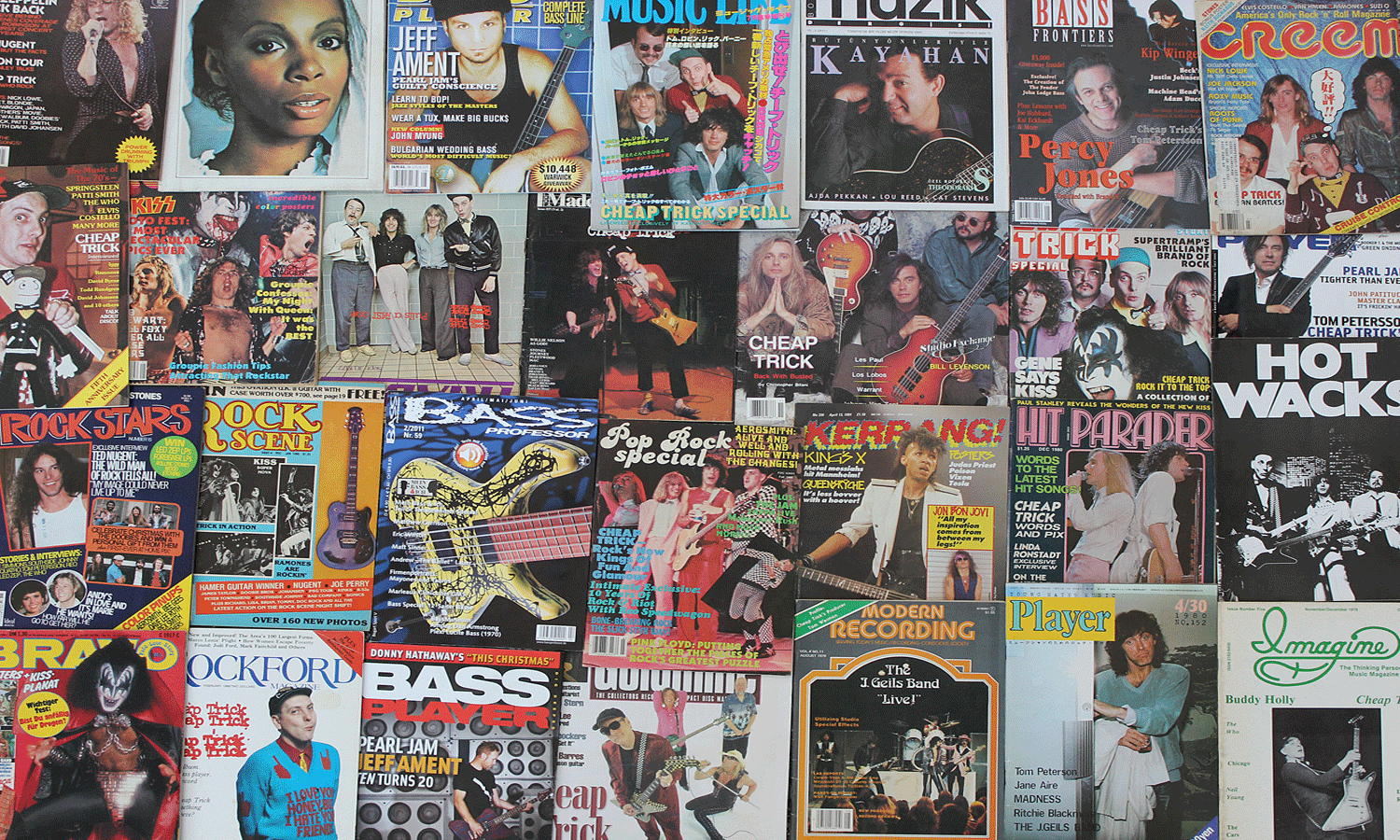Beat Instrumental
Beat InstrumeNtal - Songwriting & Recording
Article Title
Magazine
Country
Issue
Date
Pages
Cheap Trick
Beat Instrumental - Songwriting & Recording
United Kingdom
No. 150
April, 1979
12-14
This article is an interview with Rick Nielsen and Tom Petersson of Cheap Trick. These are the bits that are relevant to this site:
When did you take up bass playing?
Tom: I started out playing ordinary six string: I had a BB King model 335 Gibson, but the band I was with at the time just couldn’t find a bass player. Everyone we tried turned out a real arsehole, so I thought it might be fun to try bass. I hadn’t been playing guitar long enough to have got that proficient on it.
Rick: He was a good rhythm player for sure, though I don’t remember him playing much lead guitar.
Do you see the use of your ten and twelve string basses as an extension of that earlier rhythm playing?
Tom: Yes, I think so - but I just like the sound of those instruments as well. It’s a never ending battle with amplifiers and strings, especially in the days when we couldn’t afford a new set of Rotosounds every day. I just like the effect of the twelve string. It sounds great. It’s like anything else though - intensely personal. It just happens to suit my style of playing.
You designed the guitar, didn’t you?
Tom: Yeah, it was my idea. I’ve got a Hagstrom 8-string, and that always sounded really good, so I thought ‘why not a 12?’ Of course, Hamer didn’t think it would work.
Rick: Yeah - Tom came up with the idea, but the guitar company didn’t want to make it. They refused to make it. He wanted a twelve string from the start, but they ended up only making him a ten string ‘cos they felt it was going to be a joke anyway: but then they heard it and loved it, so they quickly made him a twelve string.
How much more difficult is it to play?
Tom: Well, it doesn’t bother me, but most people can’t play the damn thing at all: it’s real difficult, physically, because of all that extra tension.
Rick: Well, it’s hard to come up with a new idea anyway. I mean, guitars have been around a long time now, but Tom’s idea is spreading and Nick Lowe’s got an eight string, and is having a ten or twelve made, and Elvis Costello’s borrowed that. So like other people are picking up on it, and I’m sorry to say for Tom that he hasn’t got a cent out of it.
Tom: I don’t care about that.
A list of Rick’s guitars and Tom’s basses is included.
When you’re using that guitar, do you always play the set of three strings together, or is it possible to miss one or two out?
Tom: I always play all three: there’s no reason for not doing so. I play a lot of chords and a lot of octaves. It’s actually got five pickups on it. One is just a straight mono out, but it’s also got like a quad set up: one pickup for each set of strings, so can conceivably go n a studio and have a different set of strings in a different channel on the desk. It’s a little too subtle for live work actually.
What’s your present amplification set up?
Tom: Right now I’m using like a stack of 100 watt Hiwatts with four 15” cabs - again Hiwatt I think. I also use a Fender Deluxe. I like to get plenty of tone at the top end - so I can almost sound like a guitar, and the Hiwatts just about give me that capability.
